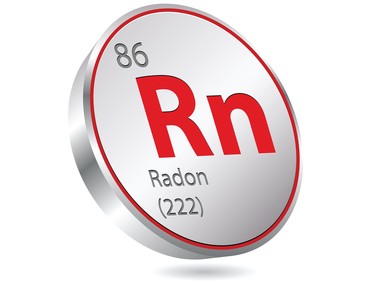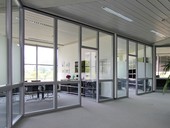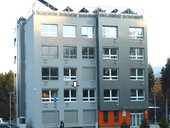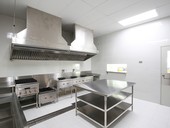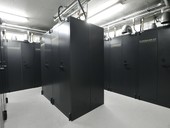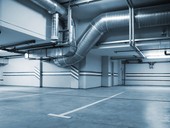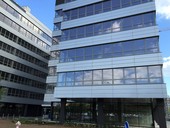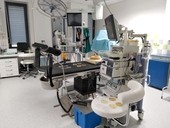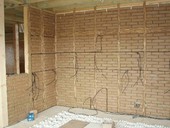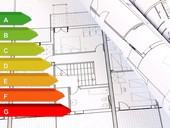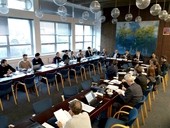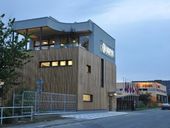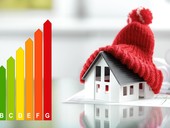The article describes all significant changes in the field of designing and implementing radon protective and remedial measures introduced by the revised version of ČSN 73 0601, which came into force on 1.10.2019. A new way of selecting measures according to the building type and new concept of designing according to the design values of input parameters are introduced. A new methodology for designing radon-proof insulations is described in detail. According to this methodology, only insulation with a radon resistance greater than the prescribed minimum radon resistance can be used for building protection.
Archiv článků od 12.11.2018 do 11.11.2019
Increasing the thermal insulation properties of walls, roofs, floors and windows has a positive effect on reducing heat loss and energy need for heating. However, when assessing the energy need for cooling in buildings with conditioned indoor environment, this tendency to increase the thermal insulation capability may lead to an increase the energy need for cooling, when measures to reduce heat gains by transparent structures are not applied.
In the contribution, we are focused on the quality of the heat-moisture microclimate and the aspects that affect it. We chose one office room in the building of the Research Center of the University of Žilina (UNIZA), oriented to the west. The subject of the measurements were all physical components of the indoor environment, the effect of solar radiation through window constructions and floor temperatures using low-temperature radiant floor heating. The contribution describes measuring methods, results of measurements and related partial conclusions for cold climatic conditions of the year.
The study deals with the measurement of microclimatic (indoor climatic) parameters and questionnaire survey in open-space offices. It describes the building, the air conditioning system and the parameters that have been assessed in the space. The paper shows the problems associated with the assessment of the thermal-humidity microclimate according to the subjective feelings of the occupants. It is an introductory work to the analysis of objective and subjective assessment in the space with uneven thermal-humidity microclimate.
Sufficient and well-designed ventilation of kitchens is a prerequisite for ensuring a high quality indoor environment in terms of temperature and humidity requirements. It is not only the removal of the produced steam and prevention of the subsequent condensed water flow, but also the elimination of all the harmful substances resulting from cooking (water vapor, aerosols or flue gases), odors and heat. Removing all pollutants from the kitchen area prevents the formation of molds and other microorganisms that could negatively affect the hygiene of the environment and the building structure of the entire space, thus affecting the operation of the kitchen. This article describes the design of kitchen ventilation according to the new set of standards ČSN EN 16282.
Data centres are a significant energy consumer, which is related to both the operation of IT technology and its cooling. It is the part of the consumed energy intended for the cooling of data centres, which, in some cases, has the potential for saving measures. The paper targets the possibilities of using outdoor air for free cooling of data centres and tries to financially quantify possible savings. Several analyses were carried out based on a real example of an existing data room equipped with a cooling circulation system.
The knowledge of internal heat gains from people performing certain activities is important for energy simulation calculations. The most commonly used data are present in Czech standard for heat load calculation, based on the values specified in ASHRAE. The standard greatly simplifies heat production from children. A calculation based on the heat balance presents a production of sensible and latent heat from people, depending on age, physical proportions, type of activity and thermal conditions in space. The results are compared with the data presented in the literature including the ratio between convection and radiation heat flow. The main goal of the analysis is to determine the heat flow from the children as an input for energy simulation calculations of school buildings.
In the case of building management, innovation is mainly used to improve the quality of the indoor environment and the comfort of people in the bulding. The role of the energy management of buildings is getting to a whole new position, where each measure is considered not only by looking at money and financial savings, but also by performance and above all health of people.
Paper deals with the definition of energy flexible building, its impact on the stability of the grid with the planned increasing share of energy from renewable sources and the possibility of using the heat storage capacity of building structures. Paper further analyzes the selected methodology for evaluation of the energy flexibible building and gives an example of thermally activated building structures.
If we want to maintain air quality in buildings, which is represented by carbon dioxide concentration, it is necessary to know the production of this gas by humans in different conditions. The baseline for mild activity is known, and as it varies with physical activity, it can be determined by spirometric measurements. The article describes how to measure breathing activity and shows interesting results of carbon dioxide production on respiratory and heart rate. These dependencies make it possible to illustrate the need to adjust the air vents for ventilation with respect to the activity that man performs in the space. The article also highlights the technical possibilities to implement the air quality control in the space served by the air-conditioning system.
I recommend this article for publishing.
The article presents the methodology of validation of the urological operating room for the number of solid particles. The author presents a methodology for assessing the classification of the space in the patient's operating field and in its surroundings. Classification is carried out according to ČSN EN ISO 14644-1 for different times during operation. This is a very topical issue, as the development of new technologies is going forward, the acquisition of optical particle counters is becoming more and more accessible and it is a matter of time when these devices will be a standard part of the permanent measurement of the operating theater's internal space.
The paper summarizes latest research on the influence of natural clay materials and earth structures on the quality of indoor microclimate regarding relative humidity. This laboratory research has been carried out at FCE CTU in Prague and UCEEB CTU in Prague and focuses on the dynamic sorption properties of building structures based on natural clays compared to building structures based on common building materials.
The article describes basic principles of the SBToolCZ green building assessment methodology stressing its up-to-date methods for school buildings. An example of a certified school is given. Renovation of this school was assessed and optimised by the SBToolCZ system which lead to the conversion into intelligent, zero energy building.
Virtual models of spaces, devices, humans, and their interconnectedness with mathematical descriptions of the interactions between them allow for shorter time in finding the optimal variation. Many processes are neither realistically traceable at the micro level, and can be derived only on the basis of the consistency of simulations and real measurements at the macro level. The TZB area offers a wide range of computer simulations, as lectures at the conference.
In July 2018, a two-year monitoring of the FENIX Group a.s. in Jeseník. During this time, different battery operating modes were applied to test their capabilities to ensure the power operation of the object. This article describes the entire period in terms of energy flows in the building. The key parameters are energy consumption, supply to the grid, self-sufficiency of the building from the photovoltaic source and its local use. A number of articles have been written about the building, detailing the building and energy aspects [1, 2]. Therefore, the description of the energy economy in the building will be given only to the extent necessary for a general view of the building's energy.
Personalized ventilation is one of the options to address individual requirements for the supply of fresh air to various workplaces. In particular, desk administration for the use of personalized ventilation creates good assumptions. Applying this method of ventilation is not common, it is the subject of research and the search for optimal solutions. However, as the article shows, it has a number of advantages.
The "size" of the control system has a significant impact on how individual actors in the supply chain - investor, designer, salesman and implementation technician or programmer - are approaching it. But how do you determine the size - and how do you define it at all? In terms of measurement and regulation, we can highlight two main factors: range and complexity.
The methodology for determining energy-neutral or energy-zero houses is different at national levels. The interest in the realization of such houses is not only influenced by the methodology but also by the market conditions in the area of moving surplus energy production from one object to another. This is an economically disadvantageous purchase price when delivering to the network. If the existing conditions in the Czech Republic are not changed, the implementation of energy-zero houses for investors will not be interesting and the potential for reduction of CO2 production will not be utilized.
zpět na aktuální články
